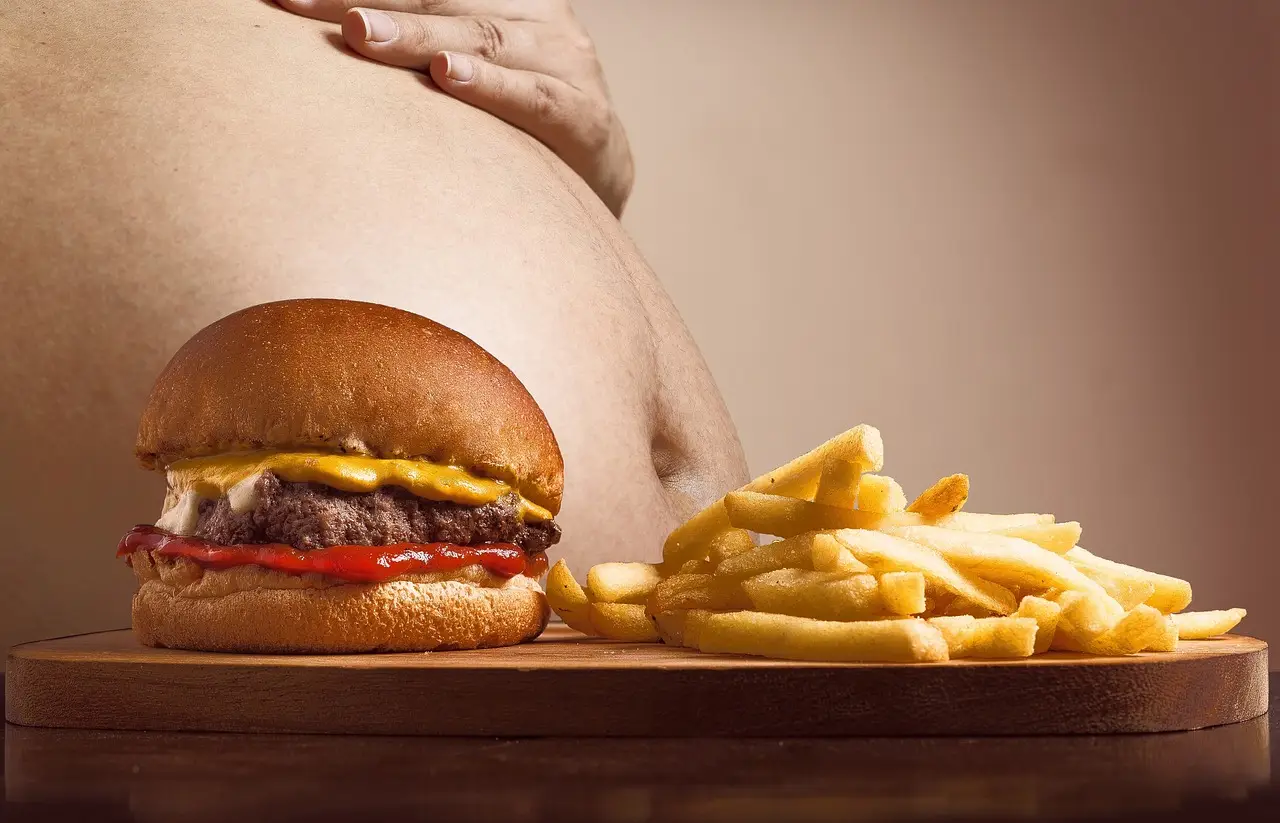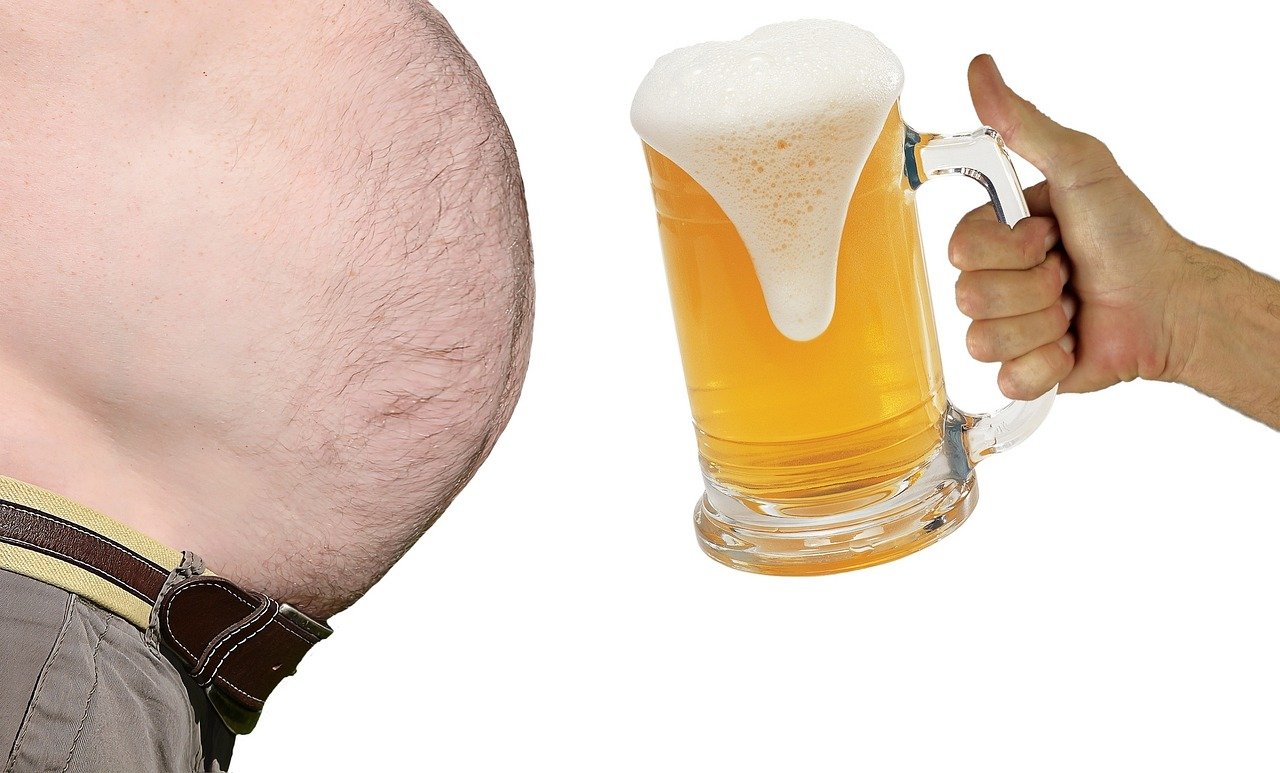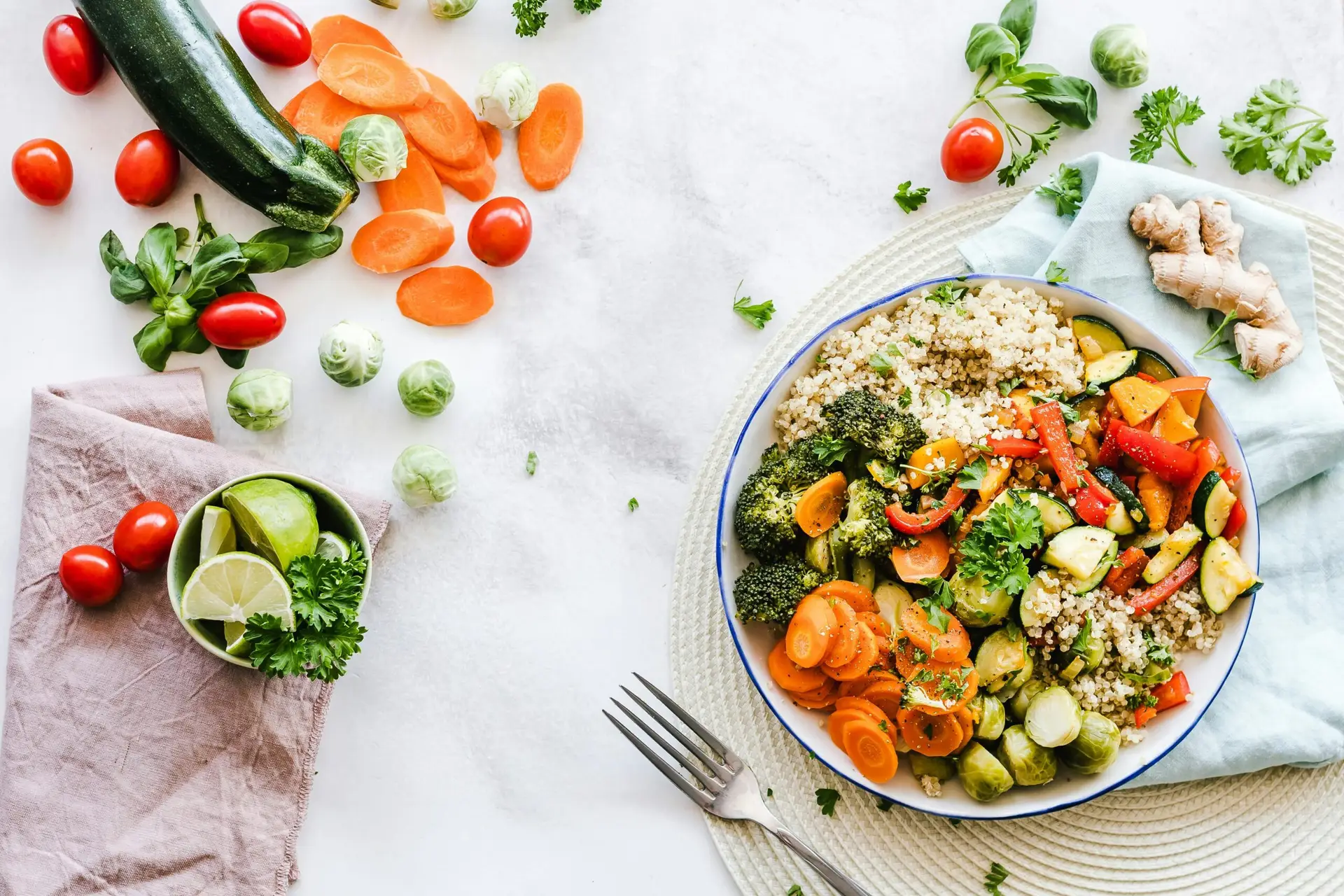Intermittent Fasting for Weight Loss: A Beginner’s Guide (2024)
Did you know that intermittent fasting for weight loss can help you shed up to 8% of your body fat in just 12 weeks? That’s right!
This isn’t your grandma’s diet – it’s a game-changing approach to shedding pounds and boosting your health.
Buckle up, because we’re about to dive into the world of intermittent fasting and how it can transform your body!
What is Intermittent Fasting?
Definition and Basic Concept.
Intermittent fasting (IF) is an eating pattern that alternates between periods of eating and fasting.
Unlike traditional diets that focus on what you eat, intermittent fasting focuses on when you eat.
It doesn’t prescribe specific foods, but rather sets time windows during which you consume all your calories.
The primary goal of IF is to give the body extended periods without food, allowing it to tap into stored fat for energy.
Types of Intermittent Fasting.
There are several popular methods of intermittent fasting, each with a unique approach to eating and fasting windows:
16/8 Method.
This method involves fasting for 16 hours and eating within an 8-hour window.
It’s one of the most common forms of IF, as it’s easy to follow and works well with most schedules.
For example, you may choose to eat between 12 p.m. and 8 p.m. and fast from 8 p.m. until noon the next day.
5:2 Diet Plan.
In the 5:2 method, you eat normally for five days a week and restrict your calorie intake to around 500-600 calories for the remaining two non-consecutive days.
This approach can be easier for some people because they only need to focus on calorie restriction twice a week.
Eat-Stop-Eat.
This method involves fasting for a full 24 hours once or twice a week.
For example, you might eat dinner at 7 p.m. and then fast until dinner at 7 p.m. the next day.
It’s more intense but can be highly effective for fat loss.
How It Differs from Traditional Dieting
Unlike traditional dieting, which typically involves cutting calories every day, intermittent fasting allows you to eat normally during your eating windows.
This can help prevent the sense of deprivation that often comes with standard calorie-restricted diets.
Instead of constantly focusing on portion sizes or calorie counts, IF allows for greater flexibility in eating while still promoting weight loss by reducing the overall time you’re consuming food.
The Science Behind Intermittent Fasting for Weight Loss
Hormonal Changes During Fasting Periods
During fasting periods, several important hormonal changes occur that facilitate weight loss:
- Insulin levels drop: When you fast, your body’s insulin levels decrease, which helps the body access stored fat more easily. Insulin is the hormone responsible for storing fat, so lower levels encourage fat burning.
- Increased growth hormone levels: Fasting triggers an increase in human growth hormone (HGH), which can aid in fat loss and muscle preservation. Higher levels of HGH boost metabolism and enhance muscle growth, even while you’re losing fat.
Metabolic Shifts and Fat Burning
When you fast, your body goes through several metabolic changes that enhance fat burning.
After around 12-16 hours without food, the body enters a state called ketosis, where it shifts from using glucose (sugar) for energy to burning fat.
This process makes IF a powerful tool for weight loss, as it encourages the body to use stored fat as fuel.
Additionally, intermittent fasting boosts your metabolism by increasing norepinephrine levels, which is a hormone that stimulates fat burning.
Autophagy and Cellular Repair
One of the most fascinating benefits of intermittent fasting is autophagy, a process in which your body cleans out damaged cells and regenerates healthier ones.
During fasting periods, the body initiates this cellular repair process, which helps remove toxins and repair damaged tissues.
This not only promotes overall health but also supports weight loss by optimizing cellular function.
Impact on Insulin Sensitivity
Improved insulin sensitivity is another significant benefit of intermittent fasting.
When your body becomes more sensitive to insulin, it’s better able to manage blood sugar levels.
This can help reduce the risk of insulin resistance and type 2 diabetes.
Moreover, greater insulin sensitivity means the body is more efficient at using carbohydrates for energy, preventing excess storage as fat.
This combination of hormonal changes, metabolic shifts, and cellular repair makes intermittent fasting a highly effective approach for weight loss.
Popular Intermittent Fasting Methods for Beginners.

16/8 Method (Leangains Protocol)
The 16/8 method, also known as the Leangains protocol, is one of the easiest and most popular forms of intermittent fasting for beginners.
With this method, you fast for 16 hours and restrict your eating to an 8-hour window.
For example, you might eat between 12 p.m. and 8 p.m., then fast from 8 p.m. until noon the next day.
This approach works well for those who want a simple routine that fits into a typical workday.
The key advantage of the 16/8 method is that it’s flexible.
You can adjust the timing of your eating window based on your schedule.
During the fasting period, you can consume non-caloric beverages like water, tea, or black coffee to stay hydrated and curb hunger.
The method helps your body become more efficient at burning fat, as your insulin levels drop during the fasting period, allowing for easier access to stored fat.
5:2 Diet
The 5:2 diet involves eating normally for five days a week and significantly reducing your calorie intake (to around 500-600 calories) on two non-consecutive days.
For example, you could eat normally from Monday to Friday and then restrict calories on Saturday and Sunday.
This method offers a great balance for beginners who want to ease into intermittent fasting without feeling deprived every day.
On fasting days, it’s essential to consume nutrient-dense, low-calorie foods to ensure you’re getting enough vitamins and minerals.
The 5:2 diet works well for those who prefer flexibility and want to focus on fasting only a couple of days a week.
Eat-Stop-Eat
The Eat-Stop-Eat method involves fasting for a full 24 hours once or twice a week.
For instance, you could eat dinner at 7 p.m. and then fast until 7 p.m. the next day.
While this method can be more challenging for beginners due to the longer fasting period, it’s highly effective for fat loss and can be easier to manage since it’s only done one or two days a week.
This approach helps with calorie restriction without requiring daily changes to your eating habits.
However, it’s important to note that consuming nutrient-dense meals before and after the fast is essential to avoid nutrient deficiencies and maintain energy levels.
Choosing the Right Method for Your Lifestyle
Selecting the right intermittent fasting method depends on your personal preferences, lifestyle, and weight loss goals.
If you’re new to fasting, the 16/8 method may be the easiest to start with, as it requires fewer drastic changes to your eating routine.
The 5:2 diet works well for those who prefer calorie counting on certain days, while the Eat-Stop-Eat method might appeal to those who want the flexibility to eat freely most of the week.
Consider your daily schedule, eating habits, and fitness goals when choosing a fasting method. Start slow, listen to your body, and adjust the fasting windows based on how you feel and your progress.
Getting Started with Intermittent Fasting.

Preparing Your Body for Fasting
Before diving into intermittent fasting, it’s important to prepare your body for the adjustment.
Start by gradually reducing your meal frequency.
Instead of three large meals, try eating two meals and a snack, giving your digestive system longer breaks between meals.
This will make the transition to fasting easier and reduce potential discomfort such as hunger pangs or fatigue.
Additionally, ensure you’re eating nutrient-dense meals in the days leading up to your fasting routine.
Focus on whole foods rich in fiber, protein, and healthy fats to keep you full and provide sustained energy.
Gradual Approach to Extending Fasting Windows
For beginners, a gradual approach to extending fasting windows is key.
Instead of jumping straight into a 16-hour fast, start with 12 hours of fasting, including overnight sleep, and an eating window of 12 hours.
Once your body adjusts, you can extend the fasting period to 14 or 16 hours.
Taking a step-by-step approach will help your body adapt to the new eating pattern, making the transition smoother and less overwhelming.
Pay attention to how you feel, and if necessary, shorten the fasting window if you experience fatigue or dizziness.
What to Eat During Eating Periods
During your eating window, it’s crucial to focus on nutrient-dense foods that fuel your body and support your weight loss goals.
Prioritize lean proteins, healthy fats, and plenty of vegetables.
Protein helps preserve muscle mass during fasting, while healthy fats and fiber will keep you feeling fuller for longer. Some examples include:
- Grilled chicken, salmon, or tofu
- Avocados, nuts, seeds
- Leafy greens, broccoli, and colorful vegetables
- Whole grains like quinoa or brown rice
Avoid processed foods, refined sugars, and excessive carbohydrates, as these can cause blood sugar spikes and cravings during fasting periods.
Staying Hydrated During Fasts
Hydration is essential while fasting.
Drink plenty of water throughout the day, and consider adding electrolytes to your water if you’re fasting for longer periods.
Herbal teas and black coffee are also good options, as they contain zero calories but can help suppress hunger.
Staying hydrated supports your body’s natural detoxification processes and keeps energy levels up.
Fasting doesn’t have to be difficult, and by staying mindful of your body’s needs, you can gradually work your way into a routine that fits your lifestyle while helping you reach your weight loss goals.
Potential Benefits Beyond Weight Loss
Improved Mental Clarity and Focus
One of the most compelling benefits of intermittent fasting, beyond weight loss, is the enhancement of mental clarity and focus.
During fasting, the body shifts its energy source from glucose to ketones, which are derived from fat stores.
This metabolic switch has been shown to improve brain function and promote sharper concentration.
Fasting also triggers the production of brain-derived neurotrophic factor (BDNF), a protein that supports cognitive function and memory.
Many people report feeling more alert and focused when fasting, making it not just a tool for physical health but mental performance as well.
Better Heart Health Markers
Intermittent fasting has been linked to improvements in cardiovascular health.
Studies suggest that fasting can reduce risk factors like cholesterol levels, blood pressure, and triglycerides, all of which are crucial markers for heart disease.
By lowering LDL cholesterol (the “bad” kind) and improving overall lipid profiles, intermittent fasting helps support a healthier heart and blood vessels.
Additionally, fasting can help regulate inflammation and oxidative stress, both of which play roles in heart disease development.
Incorporating intermittent fasting into your routine could lead to better heart health outcomes in the long term.
Longevity and Anti-Aging Effects
Intermittent fasting is often associated with longevity and anti-aging benefits.
Fasting triggers a process known as autophagy, where the body breaks down and removes damaged cells, promoting cellular repair and renewal.
This process is thought to slow down the aging process and reduce the risk of age-related diseases like Alzheimer’s and cancer.
By improving insulin sensitivity and reducing oxidative stress, intermittent fasting can also support healthy aging and potentially extend lifespan.
While more research is needed, early studies in animals and humans show promising results when it comes to fasting and longevity.
Enhanced Muscle Retention During Weight Loss
Unlike traditional calorie-restricted diets, intermittent fasting may help preserve muscle mass while promoting fat loss.
This is because fasting stimulates human growth hormone (HGH) production, which plays a critical role in maintaining muscle.
During fasting, the body prioritizes fat for fuel, allowing you to retain lean muscle tissue even while in a caloric deficit.
For those engaging in strength training, combining intermittent fasting with a high-protein diet can optimize fat loss without compromising muscle mass, making it an effective strategy for body composition improvements.
Common Challenges and How to Overcome Them.
Dealing with Hunger Pangs
Hunger is one of the most common challenges beginners face when starting intermittent fasting.
However, hunger usually subsides after the first week or two as your body adapts to your new eating schedule.
To manage hunger, focus on staying hydrated.
Drinking plenty of water, herbal tea, or black coffee can help curb cravings.
Additionally, eating nutrient-dense meals with plenty of fiber, protein, and healthy fats during your eating window will keep you fuller for longer.
Another tactic is to stay busy during fasting hours. Distractions like exercise, work, or hobbies can take your mind off food and help you power through hunger pangs.
Managing Social Situations and Meal Times
Social gatherings and shared meals can be challenging when practicing intermittent fasting.
To manage this, try scheduling your eating windows around social events.
If this isn’t possible, communicate your fasting routine to friends and family.
You can often participate in social situations without eating, and many find that the conversation becomes the focus, not the meal.
For more flexibility, consider the 5:2 or Eat-Stop-Eat method, which allows you to fast on non-consecutive days.
This way, you can plan your fasting around important social events and still enjoy meals without straying from your fasting routine.
Avoiding Overeating During Eating Windows
When your fasting period ends, it can be tempting to overeat or indulge in unhealthy foods.
This can sabotage your weight loss efforts. To avoid this, plan your meals in advance and stick to nutrient-rich options.
It’s important to eat mindfully and avoid eating too quickly, as it takes about 20 minutes for your brain to signal that you’re full.
Portion control and balanced meals—rich in proteins, healthy fats, and fiber—are essential.
By focusing on high-quality foods, you can nourish your body while avoiding overeating.
Maintaining Exercise Routines While Fasting
Maintaining an exercise routine during intermittent fasting can feel challenging, especially in the beginning.
However, many find that once their body adjusts, their performance improves.
To stay energized for workouts, consider the timing of your eating windows.
Exercising towards the end of your fasting period or just after breaking your fast allows your body to access fuel for optimal performance.
If you’re doing intense strength training or endurance workouts, make sure to prioritize protein and healthy carbohydrates during your eating windows to support muscle recovery and maintain energy levels.
Listening to your body is key—if you feel fatigued, adjust your workout intensity or the timing of your meals.
Safety Considerations and Who Should Avoid Intermittent Fasting.
Medical Conditions That May Contraindicate Fasting
While intermittent fasting can offer significant health benefits, it’s not suitable for everyone.
Individuals with certain medical conditions should exercise caution or avoid fasting altogether.
For instance, those with a history of eating disorders such as anorexia or bulimia may find that fasting triggers unhealthy eating behaviors.
People with diabetes, especially those on insulin, need to be careful, as fasting can cause dangerous fluctuations in blood sugar levels.
Fasting may also be risky for individuals with chronic illnesses like heart disease, kidney problems, or liver disease, as it can add unnecessary strain on the body.
If you have any medical conditions, it’s essential to consult a healthcare professional before beginning intermittent fasting.
Pregnancy and Intermittent Fasting
Pregnant and breastfeeding women should avoid intermittent fasting, as the nutritional demands of both pregnancy and breastfeeding are elevated.
Restricting calorie intake during this time can potentially deprive both the mother and baby of essential nutrients, affecting fetal development and milk production.
During pregnancy, a balanced diet with regular meals is crucial for supporting the health of both the mother and the baby.
It’s also essential for regulating energy levels and mood, which can fluctuate during this period.
Signs That Fasting May Not Be Right for You
While many people thrive on intermittent fasting, it’s not for everyone.
If you experience persistent fatigue, dizziness, irritability, or intense hunger that impacts your daily functioning, fasting may not be suitable for you.
Additionally, if you find yourself obsessing over food or feeling anxious about eating, these could be signs that intermittent fasting is negatively affecting your mental health.
Other red flags include frequent headaches, difficulty concentrating, and significant drops in energy, which may indicate that your body is not adjusting well to the fasting periods.
If these symptoms persist, it’s crucial to reconsider whether intermittent fasting aligns with your health and lifestyle.
Importance of Consulting with a Healthcare Professional
Before starting any fasting regimen, it’s advisable to consult with a healthcare professional, particularly if you have pre-existing health conditions or are taking medications.
A healthcare provider can help you determine if intermittent fasting is a safe and effective strategy based on your individual health profile.
They can also provide guidance on how to adapt fasting to your unique needs and goals, and monitor for any potential complications.
Personalized medical advice is especially important for people with metabolic conditions, those undergoing treatment for chronic diseases, and anyone with concerns about the impact of fasting on their overall well-being.
Conclusion:
Ready to fast-track your weight loss journey? Intermittent fasting for weight loss could be your ticket to a leaner, healthier you!
Remember, it’s not just about when you eat, but what you eat too. Start small, listen to your body, and watch the magic happen.
Who’s ready to give their metabolism a wake-up call?
Intermittent Fasting for Weight Loss: A Beginner’s Guide (2024) Read More »











